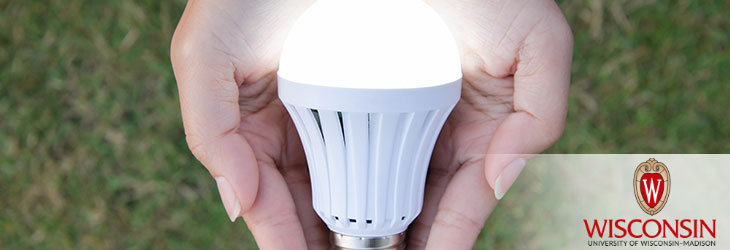Clean Technology

Preparing HMF from Biomass in Polar Aprotic Solvents
WARF: P140138US01
Inventors: James Dumesic, George Huber, Ronen Weingarten
The Wisconsin Alumni Research Foundation (WARF) is seeking commercial partners interested in developing a cheaper, milder method to produce HMF from cellulosic biomass using polar aprotic solvents.
Overview
HMF (5-hydroxymethyl furfural) is a highly sought renewable compound that can be used to produce bulk and value-added chemicals. Such chemicals include FDCA, which is useful in the polymer industry, and DMF, which can be used as a liquid transportation fuel.
HMF can be prepared from cellulosic biomass using aqueous acid hydrolysis with 30 percent yields, but this requires high temperatures and pressures, and often results in undesirable byproducts like humin. Higher yields can be obtained using costly ionic liquids.
Needed is an easier, faster and more economical method to produce HMF from biomass.
HMF can be prepared from cellulosic biomass using aqueous acid hydrolysis with 30 percent yields, but this requires high temperatures and pressures, and often results in undesirable byproducts like humin. Higher yields can be obtained using costly ionic liquids.
Needed is an easier, faster and more economical method to produce HMF from biomass.
The Invention
UW–Madison researchers have developed a method to prepare HMF from biomass under mild reaction conditions without the presence of water. The reaction can use any polar aprotic solvent (e.g., tetrahydrofuran). Yields are on par with those obtained using ionic liquids.
The reaction requires mild mineral acids and moderate temperatures (about 200 degrees C). In the process, cellulose decomposes to levoglucosan, which is then dehydrated to HMF. Glucose, levulinic acid and formic acid also are produced as a result of side reactions. HMF and the byproducts can be separated from the solvent using conventional methods like distillation and evaporation.
The reaction requires mild mineral acids and moderate temperatures (about 200 degrees C). In the process, cellulose decomposes to levoglucosan, which is then dehydrated to HMF. Glucose, levulinic acid and formic acid also are produced as a result of side reactions. HMF and the byproducts can be separated from the solvent using conventional methods like distillation and evaporation.
Applications
- Industrial scale production of HMF from cellulosic biomass
Key Benefits
- Yields comparable to ionic liquid methods
- Sustainable
- Mild and inexpensive
- HMF is easily recovered downstream.
- Challenges the assumption that water is required
Stage of Development
HMF yields of 44 percent and combined HMF/levulinic acid yields of 53 percent have been observed. These yields rival those obtained in ionic liquids or biphasic systems.
Additional Information
For More Information About the Inventors
Related Technologies
For current licensing status, please contact Jennifer Gottwald at [javascript protected email address] or 608-960-9854